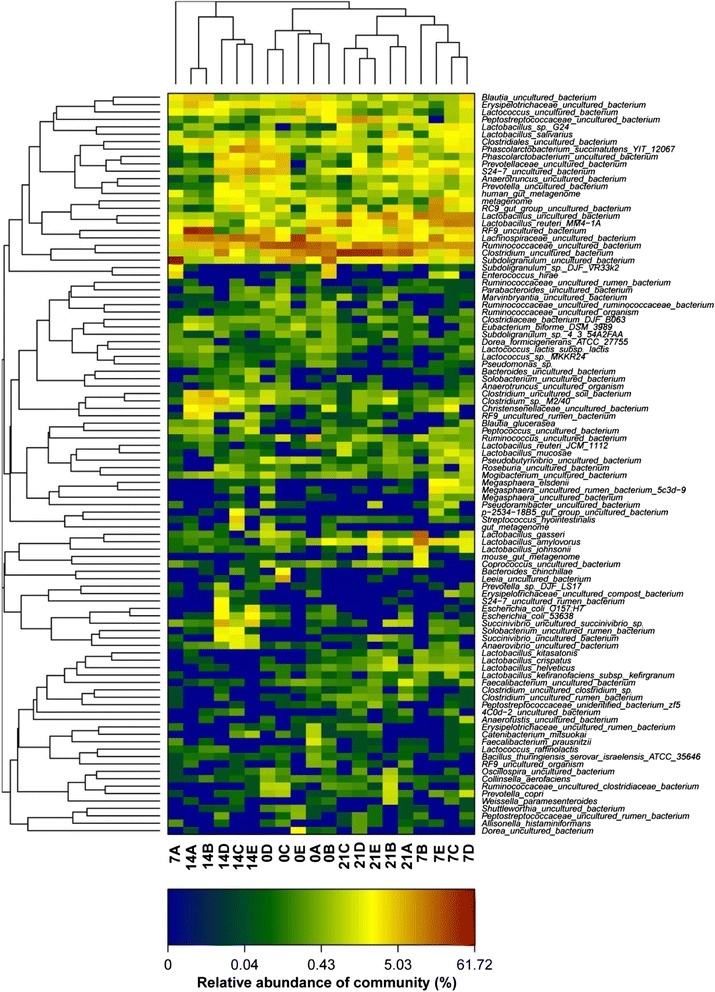Fig. 5.

Bacterial distribution of heatmap at the species level. Double dendrogram showing the bacterial distribution (species level) among the all samples. The bacterial phylogenetic tree was calculated using the neighbor-joining method, and the relationship among samples was determined using Bray distance and the complete clustering method. Total 100 species with the abundance higher than 0.1 % within total bacteria were sorted for the analysis. The heatmap plot depicts the relative percentage of each bacterial species (variables clustering on the Y-axis) within each sample (X-axis clustering). The relative values for the bacterial species are depicted by color intensity in the legend indicated at the top of the figure. Clusters based on the distance of the different samples along the X-axis and the bacterial species along the Y-axis are indicated at the top and bottom of the figure, respectively. Note: 0A, 0B, 0C, 0D, and 0E represent the samples of the control, INVSc1(EV), INVSc1-TE(−), INVSc1-EE(+), and INVSc1-IE(+) groups, respectively, at day 0; 7A, 7B, 7C, 7D, and 7E represent the samples of the control, INVSc1(EV), INVSc1-TE(−), INVSc1-EE(+), and INVSc1-IE(+) groups, respectively, at day 7; 14A, 14B, 14C, 14D, and 14E represent the samples of the control, INVSc1(EV), INVSc1-TE(−), INVSc1-EE(+), and INVSc1-IE(+) groups, respectively, at day 14; 21A, 21B, 21C, 21D, and 21E represent the samples of the control, INVSc1(EV), INVSc1-TE(−), INVSc1-EE(+), and INVSc1-IE(+) groups, respectively, at day 21
